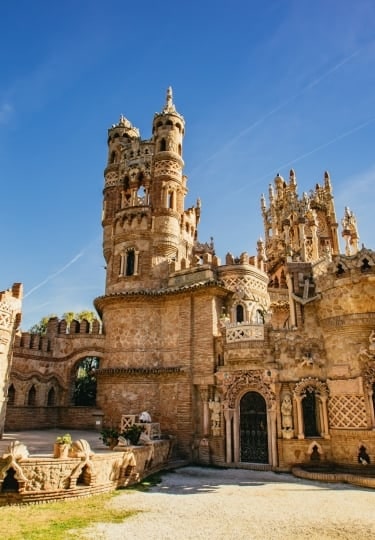With more than 3,000 miles of coastline to protect, Spain is home to thousands of magnificent castles. Typically built for defensive reasons, castles in Spain are almost always perched on a hilltop and now, in times of peace, are usually surrounded by gorgeous manicured gardens.
Some overlook emerald green forests or have commanding views of the sea. Many include museums and interpretation centers. Some are ruins, while others have been converted into luxurious hotels.
From medieval and Moorish to neo-Gothic and fanciful fortresses, castles in Spain are layered with history, typically reflecting the country’s turbulent centuries of Muslim and Christian rule, when frontiers were continually under dispute, and pirates represented an additional threat from the sea.
Explore 11 of the best Spanish castles below.
Bellver Castle, Palma De Mallorca
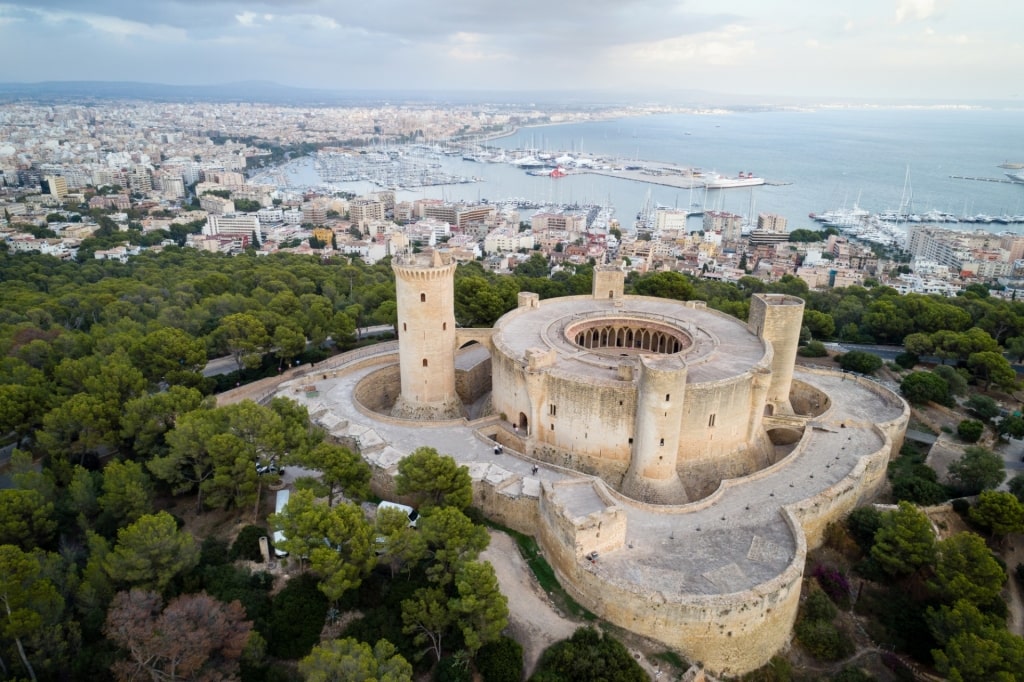
Bellver Castle, Palma De Mallorca
One of the best castles in Spain, the moated Bellver Castle is surrounded by thick woods, perched on a hill 370 feet above the sparkling Mediterranean Sea on the outskirts of Palma De Mallorca.
Built in the early 1300s, Bellver Castle was designed as a royal residence, with the three kings of Mallorca, Jaume II, Sanç I, and Jaume III, residing there for short periods.
The medieval castle features three semicircular buttressed towers, with a central, sun-dappled courtyard and impressive Gothic arches, and a vaulted ceiling on the second story. On the north side of Bellver Castle is a circular tower featuring a spiral staircase leading to four chambers and a terrace.
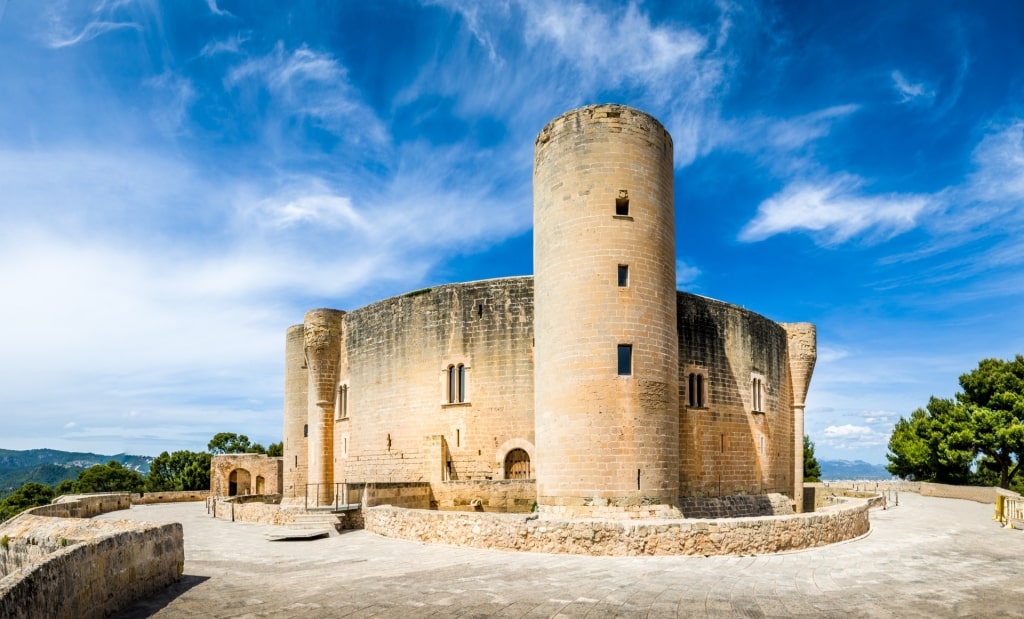
Bellver Castle, Palma De Mallorca
Following the fall of the Kingdom of Mallorca, Bellver Castle operated as a prison at various periods—most recently housing around 800 Republican inmates during and after the Spanish Civil War that lasted from July 1936 to April 1939.
Hop on a bus in the city center to reach Bellver Castle on the southwest fringes of the Spanish island. Join a guided tour to explore inside the castle’s stone walls, including the Chapel of Saint Mark, the Throne room, and The Keep.
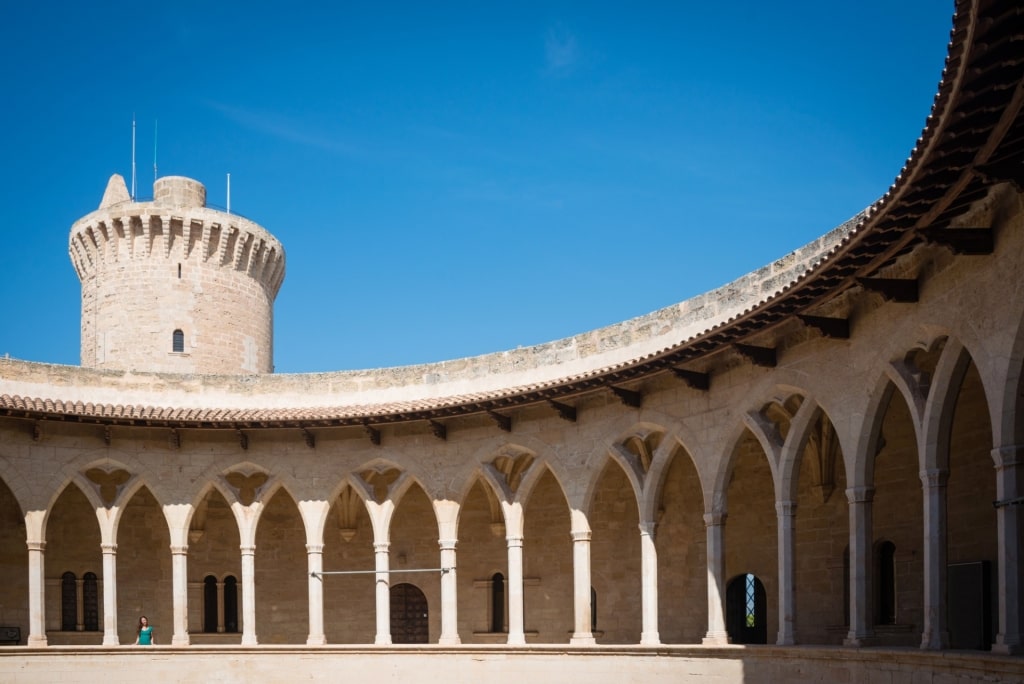
Bellver Castle, Palma De Mallorca
Since 1960, Bellver Castle has also been home to the Palma History Museum, which houses the impressive Despuig Collection of classical sculpture. Explore the museum to delve deeper into Mallorcan history from the Bronze Age’s Talayotic settlement to the 20th century.
If you’re looking for an alternative day out in Palma that combines history and architecture—slightly off the city’s more well-trodden path—Bellver Castle is a worthy choice.
Alhambra Palace, Granada
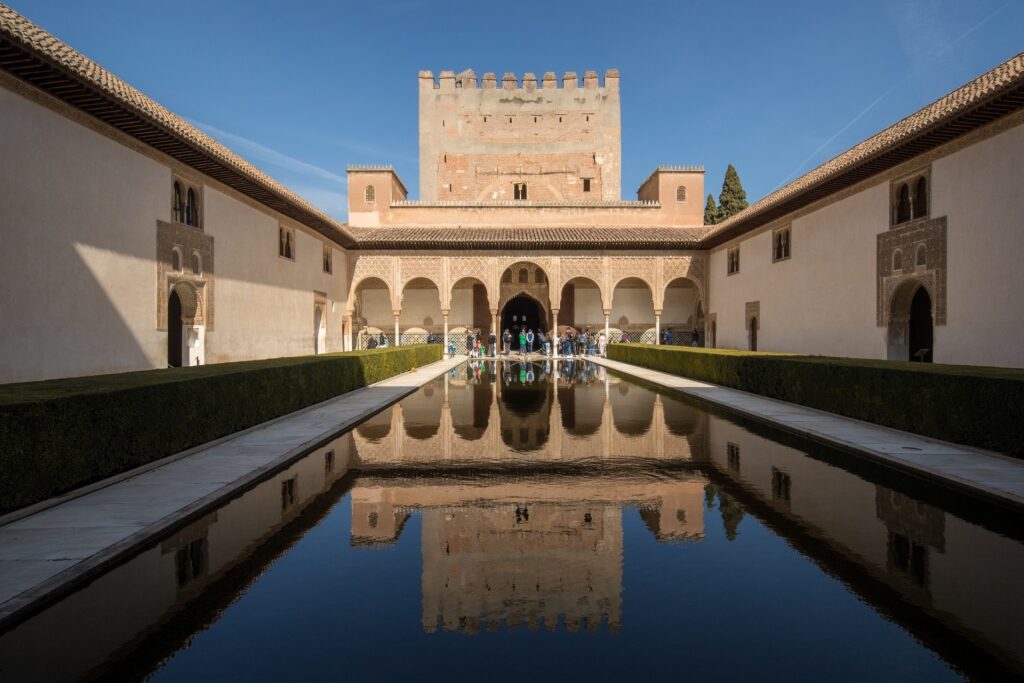
Alhambra Palace, Granada
The mystical UNESCO World Heritage Site of La Alhambra is a formidable European castle circled by a lush green cypress forest, which hides palaces, gardens, and a citadel in Granada. Built by the Nasrid Dynasty, Alhambra means “red fort” in Arabic, named after its golden-ochre walls.
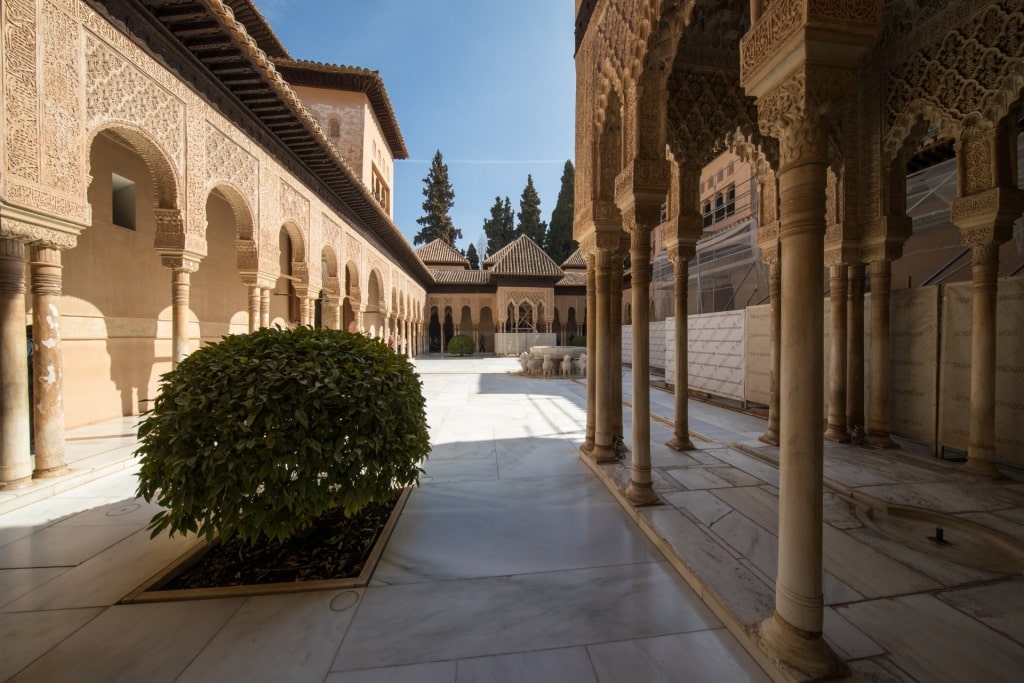
Patio of the Lions in Alhambra Palace, Granada
Delve into Alhambra’s intricate complex of buildings and gardens on a day trip from Malaga. The palace is home to handsome rectangular courtyards—including the most famous, the Patio of the Lions with its water-spouting lion fountains—as well as four Nasrid-era palaces, a former military base, and the living quarters of servants and court officials.
You could walk the fortress walls, which connect Alhambra’s 30 gleaming towers. The walls stretch for over a mile, offering some fabulous views of the sometimes-snow capped peaks of the Sierra Nevada mountains, home to some of the best hikes in Spain.
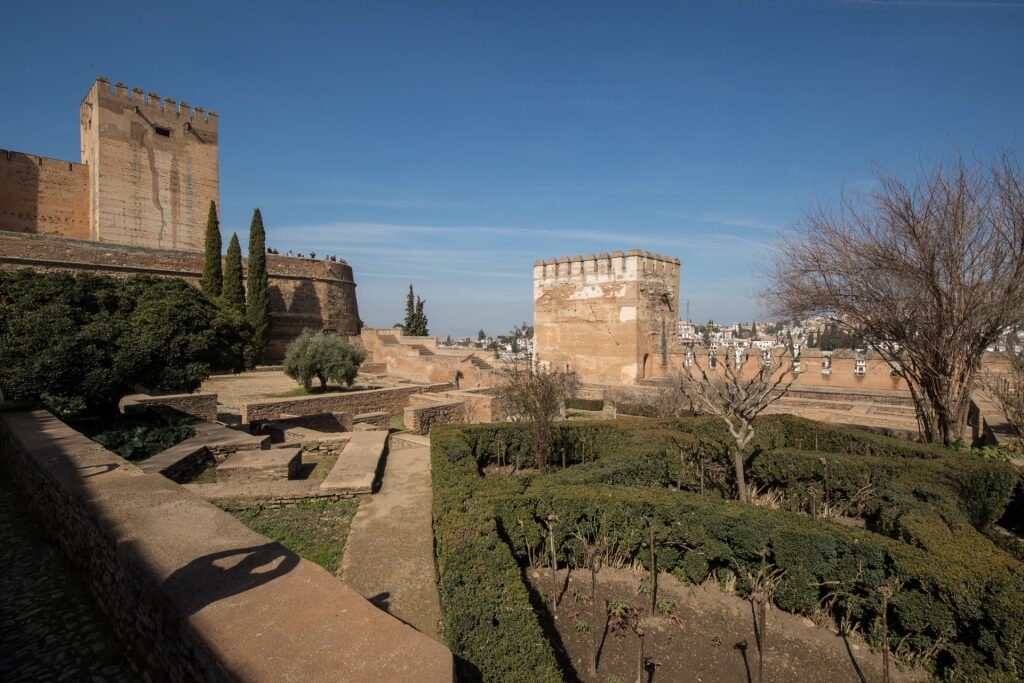
Alhambra Palace, Granada
The elegant exterior spaces of this Spanish landmark are as breathtaking as the interiors. Dedicate time to wandering around the Hispano-Islamic gardens, filled with colorful floral displays. Roses, carnations, violets, wallflowers, irises, and water lilies are among the 700 plant species found in the landscaping.
Colomares Monument Castle, Malaga
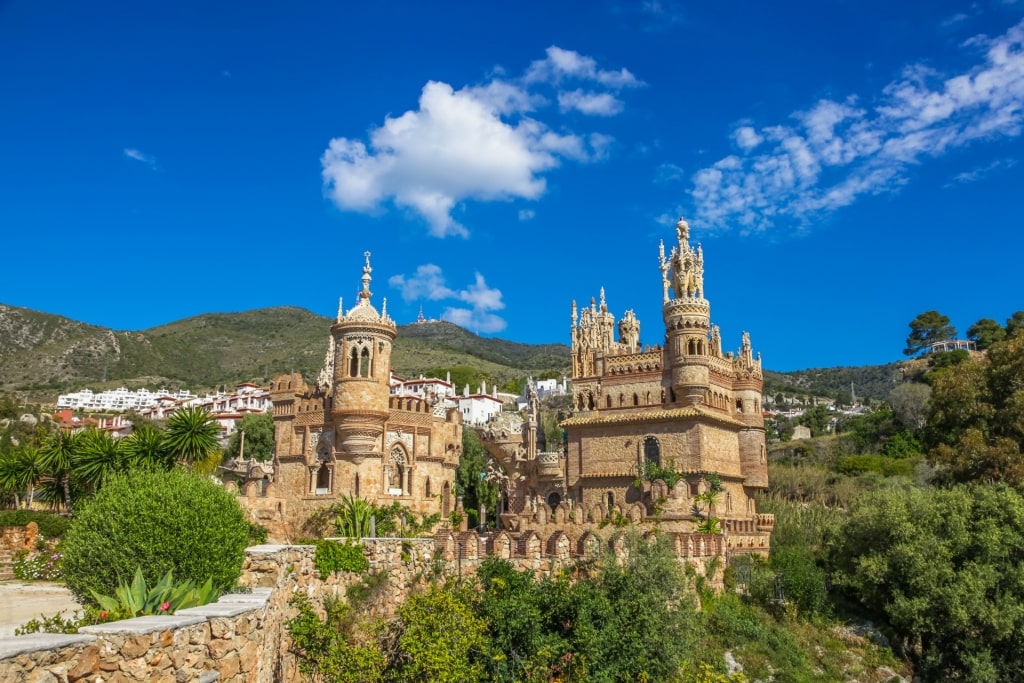
Colomares Monument Castle, Malaga
The fantastical Colomares Monument is an extraordinary castle dedicated to Christopher Columbus that lies roughly 20 miles south of Malaga near the town of Benalmádena.
Colomares Monument might appear as though it was built in a bygone era—a gargantuan stone mass of exquisite craftsmanship—but it actually only dates to the late 20th century.
Constructed over seven years by Esteban Martín with the help of two builders, the castle was completed in 1994, becoming the largest monument dedicated to Columbus in the world.
Colomares Monument Castle is one of the best castles in Spain of the modern era. Tracing Columbus’s explorations, the castle narrates the discovery of the Americas through eye-popping scenes depicted around the building.
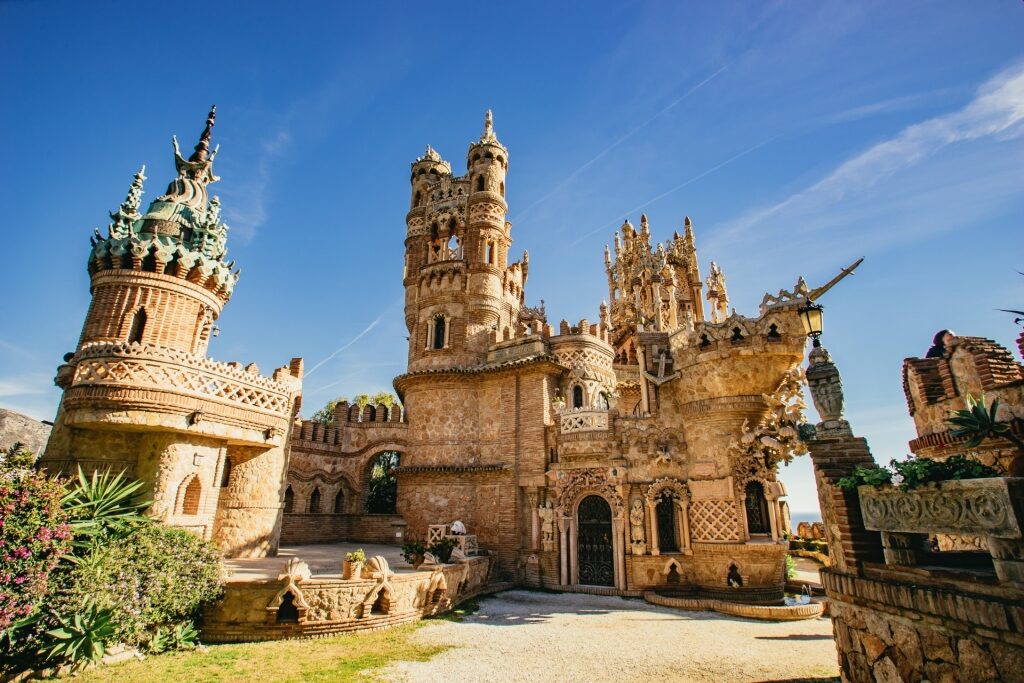
Colomares Monument Castle, Malaga
You’ll notice several styles of architecture replicated in Colomares Monument Castle, including Roman, Byzantine, Gothic, and Mudéjar (an Islamic-influenced style from the middle ages).
The beautiful setting is enhanced by a series of lush green palm trees surrounding the castle. Wander the grounds and admire the views of the Costa del Sol and the Mediterranean beyond.
Step inside the castle’s miniature church—dedicated to Saint Elizabeth of Hungary—and you’ll feel like a giant, as the church measures just 21 square feet. The Guinness World Records awarded it the title of the smallest church in the world.
Alcazaba of Almería, Almería

Alcazaba of Almería, Almería
The second-largest Arabic castle in Spain after the Alhambra Palace, the Alcazaba of Almería dominates the city. The earliest part of the Alcazaba of Almería dates back to the 10th century, when it was built on the orders of Abderrahman III, the Umayyad Emir who founded the city.
There are three sections of the Alcazaba; the original two are of Islamic origin, while a third was added following the Christian conquest of Almería in 1489.
The first walled enclosure contains a large garden and ponds, while the second houses a palatial residence. There’s also a mosque that was converted into a church at the end of the 15th century.

Alcazaba of Almería, Almería
Pass through the Guard tower to arrive at the Gate of Justice. Explore the castle’s large rooms featuring vaulted ceilings, Gothic doors, and leafy courtyards and squares. You’ll witness jaw-dropping views from the castle’s battlement walls, which overlook the azure Mediterranean Sea.
Remember to bring your camera. Green cacti and other Mediterranean shrubs dotted around the Alcazaba of Almería make for a pretty picture.
Cardona Castle, Barcelona
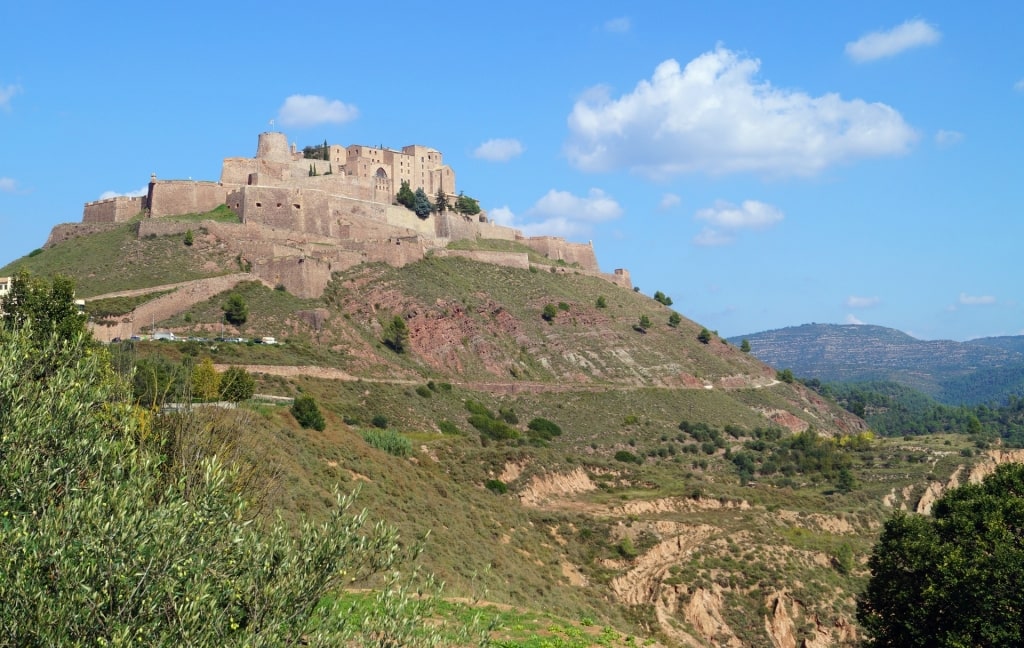
Cardona Castle, Barcelona
The word fairytale is often overused to describe towering fortresses, but it is entirely appropriate in the case of Cardona Castle.
This enchanting Catalan castle is reached from Barcelona in just over an hour’s drive. You’ll spot it from miles away, with its imposing zigzagging stone walls weaving around a hilltop.
Cardona Castle was built in 886 AD by count Guifré el Pilós—who was also known as Wilfred the Hairy—though it has undergone many modernizations over the centuries, including timber shutters added in the 11th and 12th centuries and Roman and Gothic additions.
Now, part of the castle is a Parador, a collection of government-run hotels in Spain, all based in historic buildings.
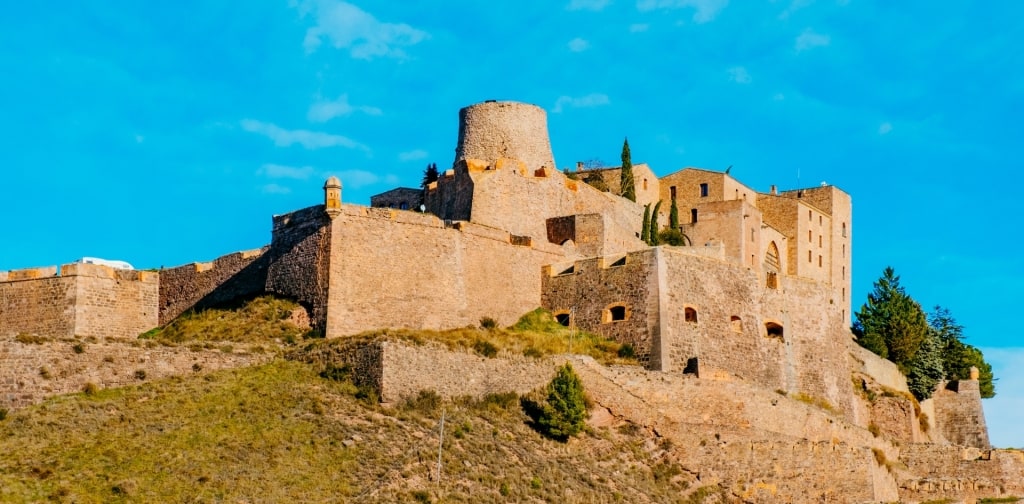
Cardona Castle, Barcelona
One of the most magnificent aspects is the 14th-century cloister with its tall stone arches in beautiful condition, having been recently restored. Climb to the top of the 11th-century circular Minyona tower and wander inside the collegiate church of Sant Vicenç.
The Spanish church was built in 1040 on the site of a chapel and consists of three naves and a crypt located below the presbytery.
Once you’ve explored the castle and perhaps stopped for a drink on the terrace of the Parador, enjoy a stroll around the tangled old town of Cardona, with its narrow winding streets, ancient church, and photogenic crumbling buildings.
Read: Three Days in Barcelona
Alcazaba Palace, Malaga
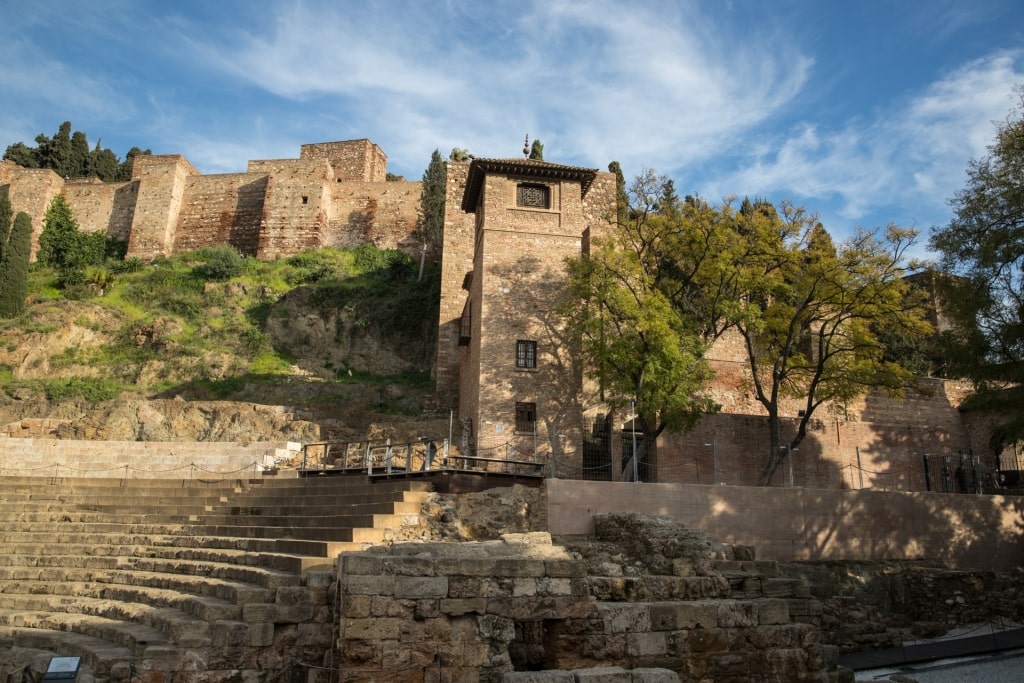
Alcazaba Palace, Malaga
Considered the most carefully preserved Moorish fortress in the country, Malaga’s Alcazaba Palace is one of the best castles in Spain.
Alcazaba Palace was built in the 11th century by the Hammudid dynasty on the slopes of Gibralfaro mountain, next to a Roman theater that dates back to the first century BC.
Several of Spain’s best museums are located close by the Alcazaba Palace, too, including the Picasso Museum and new Centre Pompidou Malaga.
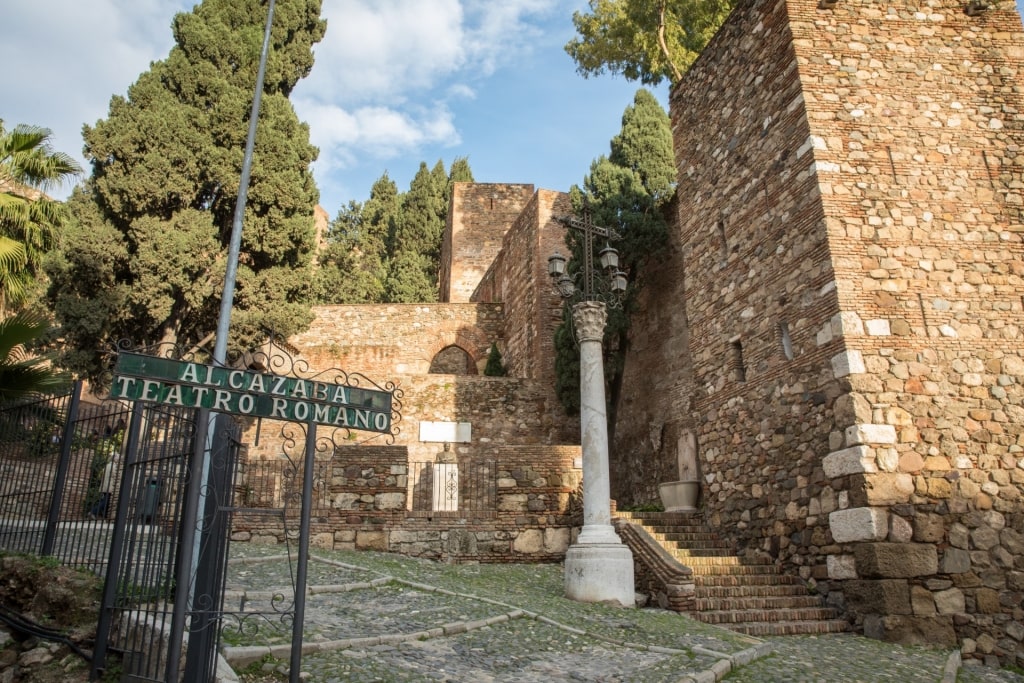
Alcazaba Palace, Malaga
The Alcazaba is connected to the higher Castle of Gibralfaro by a walled corridor; the castle was built to protect the original fortress. Stroll the Alcazaba Palace’s double walls, a characteristic of this Taifa-period of military architecture.
Enjoy the tranquility of the leafy courtyards, where many of the original Moorish ornamentation and features have been carefully recreated.
Atalaya Castle, Alicante
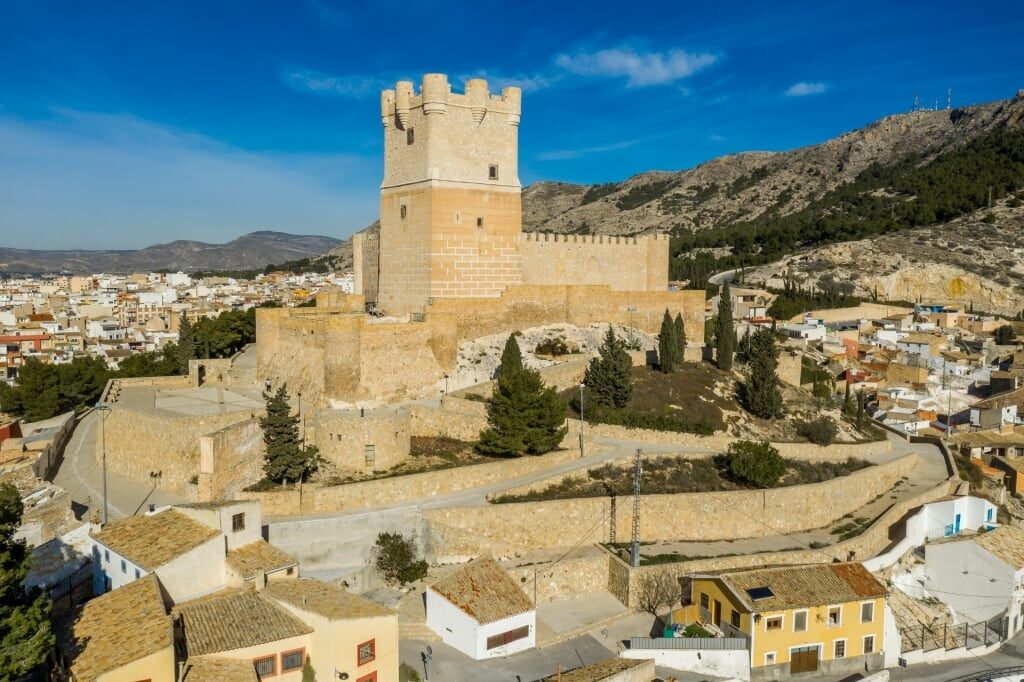
Atalaya Castle, Alicante
The sturdy, three-story Atalaya Castle lies in the center of Villena, a city located a 45-minute drive inland from Alicante, on Spain’s Costa Blanca.
Built around the 12th century by the Almohad empire, Atalaya is an immaculate honey-hued bastion featuring a double-walled enclosure. The outer wall features 12 towers, while the taller inner contains the looming keep.
Passed down through lords, princes, and powerful families of the region over the centuries, Atalaya Castle was eventually taken by Spain’s Catholic Monarchs in 1476, around which time the castle was extended.
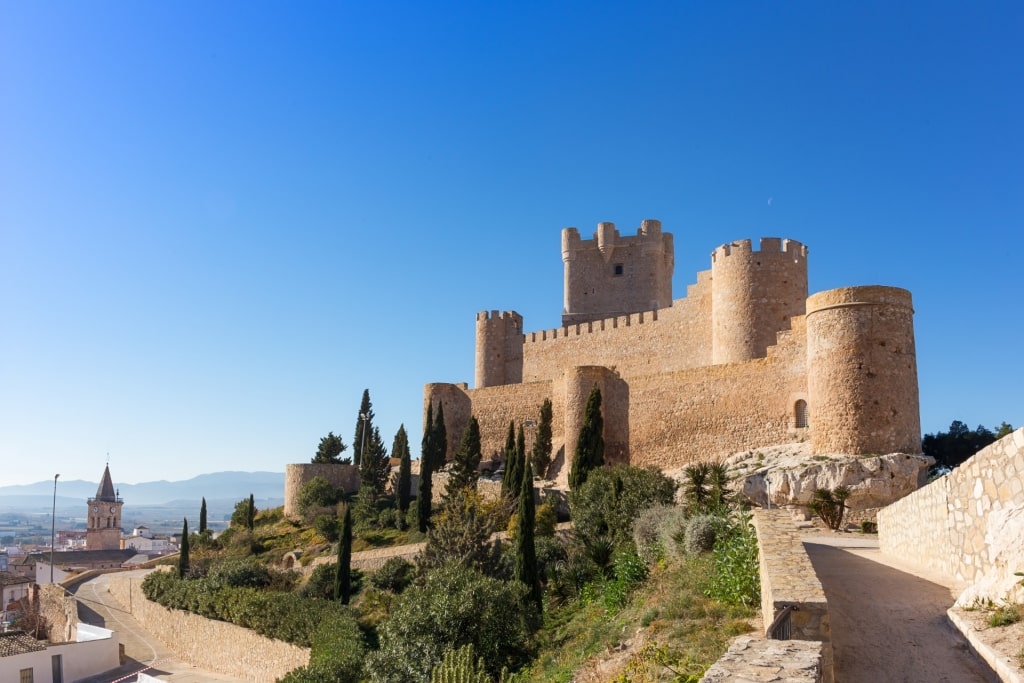
Atalaya Castle, Alicante
Stroll along Atalaya Castle’s ancient walls, which bear the scars of battles including the Germanías and the War of the Spanish Succession.
The walls are connected by a series of towers, which fortify the central keep. Inside, gaze at the spectacular murals that make this one of the most beautiful places in Spain.
Peniscola Castle, near Valencia
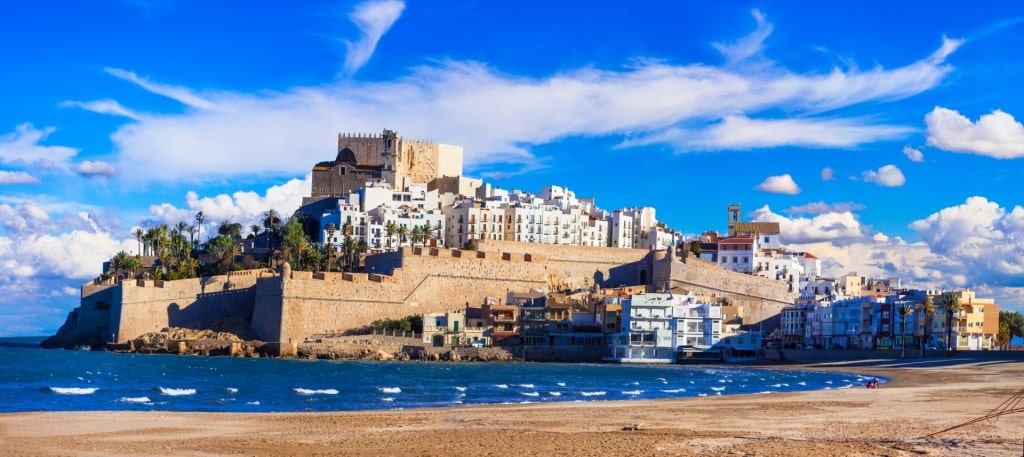
Peniscola Castle, near Valencia
Lying midway between Valencia and Tarragona in the province of Castellón, the historic Peniscola Castle is perched on a rocky ledge overlooking the Mediterranean Sea.
Built by the Knights Templar on the remnants of a Moorish fort, Peniscola Castle was once the home of Pope Luna, Benedict XIII, who moved here in 1411.
Take advantage of the guided tours offered between June and September. Visit the single nave chapel and the Throne Room with its impressive arched roof.
Peniscola Castle also features a parade ground with a balcony over the sea and a keep that offers sweeping views of the sparkling Costa del Azahar coastline, and the town’s terracotta rooftops.
Read: Best Beaches in Valencia, Spain
Castle of Lorca, near Cartagena
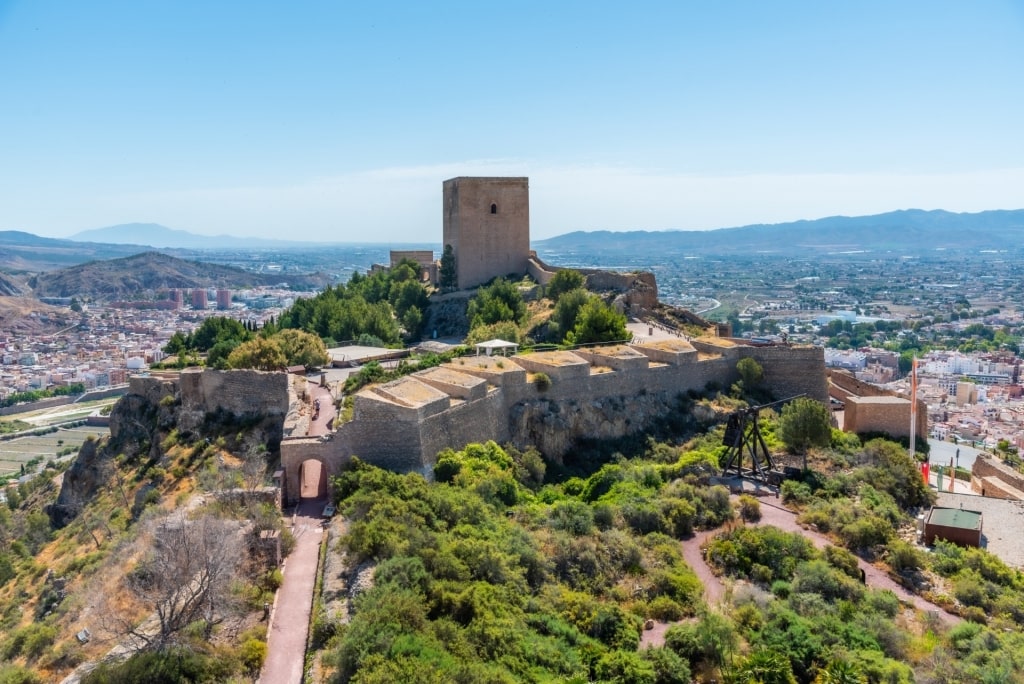
Castle of Lorca, near Cartagena
The 13th-century Castle of Lorca, or Fortaleza del Sol (Fortress of the Sun) is strategically positioned overlooking the city of Lorca in the Murcia region of Spain.
The Castle of Lorca is characterized by its two towers, Espolón Tower, with its Mudejar influences, and the rectangular Alfonsí Tower, which was rebuilt in the 15th century. Also inside the castle grounds are the remains of the 15th-century Jewish quarter and a reconstructed synagogue.
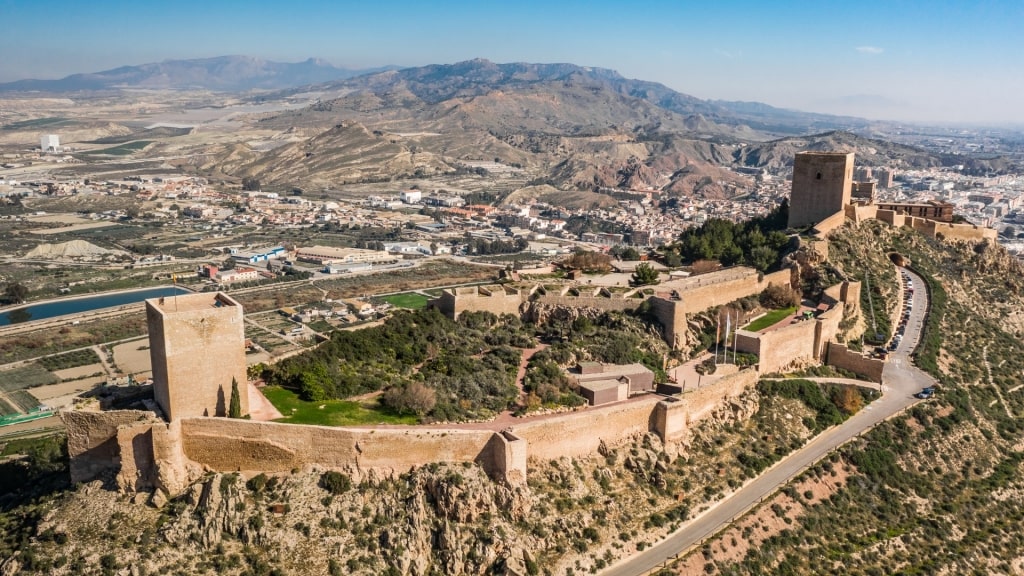
Castle of Lorca, near Cartagena
Look out for a range of activities at the castle throughout the year, featuring the music, food, and culture that Spain is known for.
There’s also a quaint café, Las Caballerizas del Castillo de Lorca, located in the courtyard, where you can enjoy fresh local Guadalentín valley produce once you’ve toured the castle.
Soutomaior Castle, Vigo
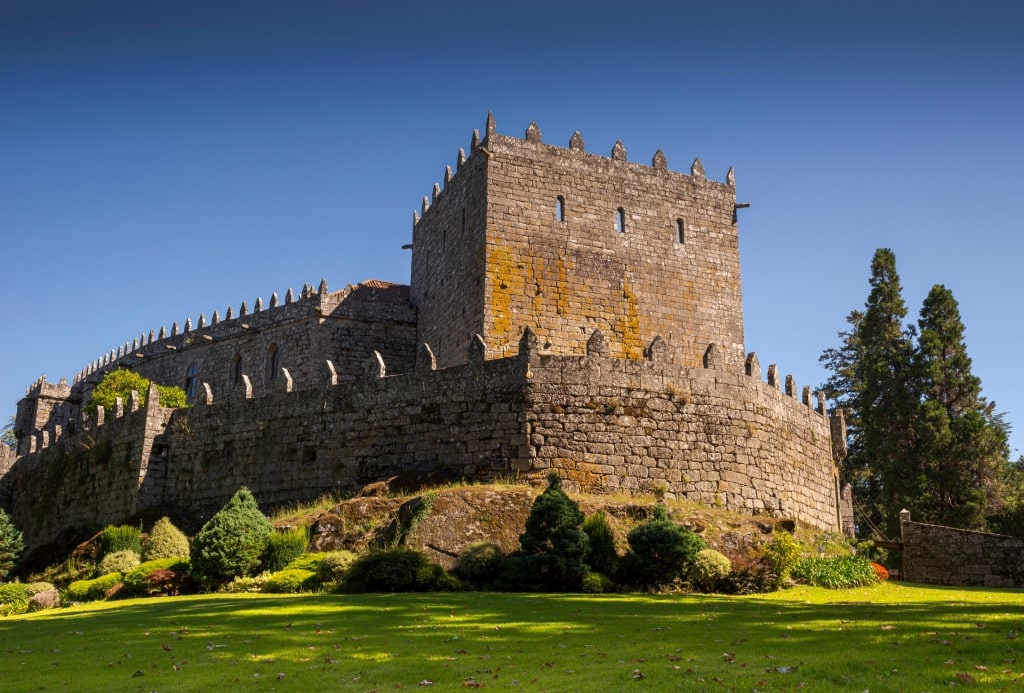
Soutomaior Castle, Vigo
Sitting on a green hill in the beautiful countryside, Soutomaior is a charming castle on Spain’s northwest coast near the city of Vigo. Built on the orders of Alfonso VII, who reigned Galicia in the early 1100s, the medieval castle is located at the bottom of the Ría de Vigo estuary.
Like many of the best castles in Spain, Soutomaior has been enhanced and repaired over the years. Following years of decay, the 19th century brought about new changes for Soutomaior Castle when the Marqués de la Vega de Armijo took ownership, adding the striking Galería de Damas balcony.
The family also created beautiful gardens filled with blushing floral displays and ancient trees, which can still be admired today.
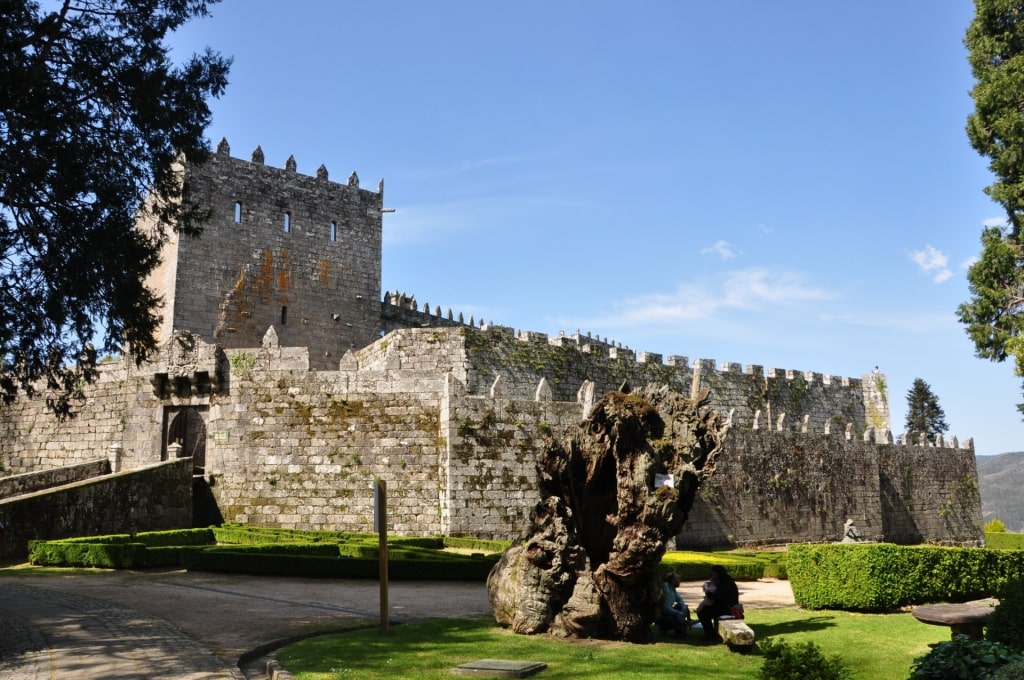
Soutomaior Castle, Vigo
Tour the castle’s museum to learn about its centuries of heritage before uncovering some of Soutomaior Castle’s 25 hectares of gardens. Soutomaior’s outdoor space is among the most extensive botanical gardens in Galicia.
Choose from one of three routes to explore the gardens’ display of colorful camellias, vineyards producing the region’s famous Albariño wine, and forests filled with chestnuts, oaks, pines, and eucalyptus trees.
Before you leave, pick up a prized bottle or two of Soutomaior’s delicious Albariño to be enjoyed when you return home.
Read: Insider’s Guide to Vigo, Spain
Biar Castle, Alicante
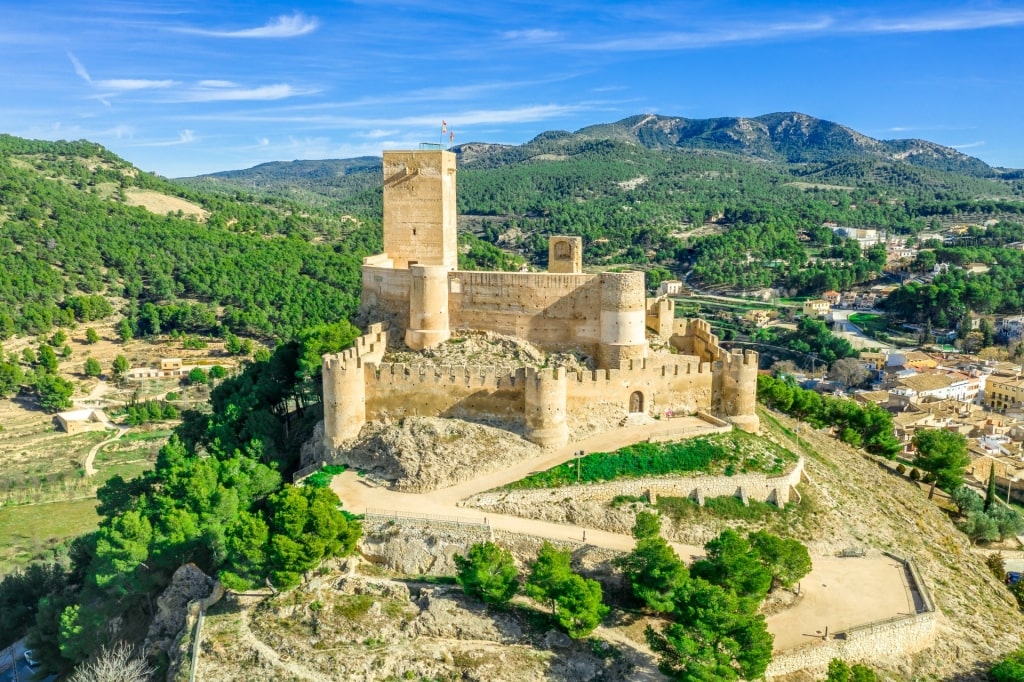
Biar Castle, Alicante
The breathtaking Biar Castle near Serra de Mariola National Park lies 30 miles inland from Alicante. Dating from the 12th century, the castle is known for its Spanish Arabic architecture, prominent in southern Spain during the middle ages. This captivating castle is another Almohad empire masterpiece.
Biar Castle’s walls cling to the hilly landscape, shadowing the village of Biar. The castle features a double enclosure with four semi-circular towers at each corner, topped with battlements and festooned with arrow slits.
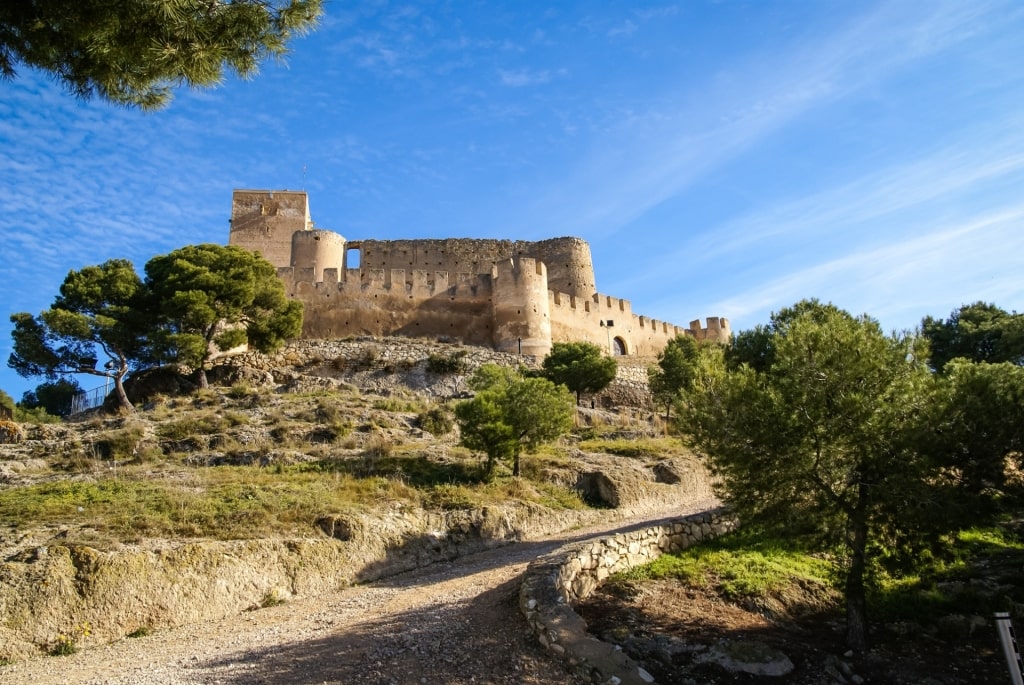
Biar Castle, Alicante
Central to Biar Castle is a rectangular keep. At almost 56 feet, it towers above the castle’s walls. Step inside the keep to view the traditional Almohad ribbed vault on the first floor—it’s the only one of its kind to be found in Spain’s military architecture.
Once you’ve explored the castle, it’s worth discovering Biar’s delightful old quarter, with a maze of ancient streets featuring balconied houses, a scattering of tapas bars, and a Renaissance-style church.
Read: Best Things to Do in Alicante
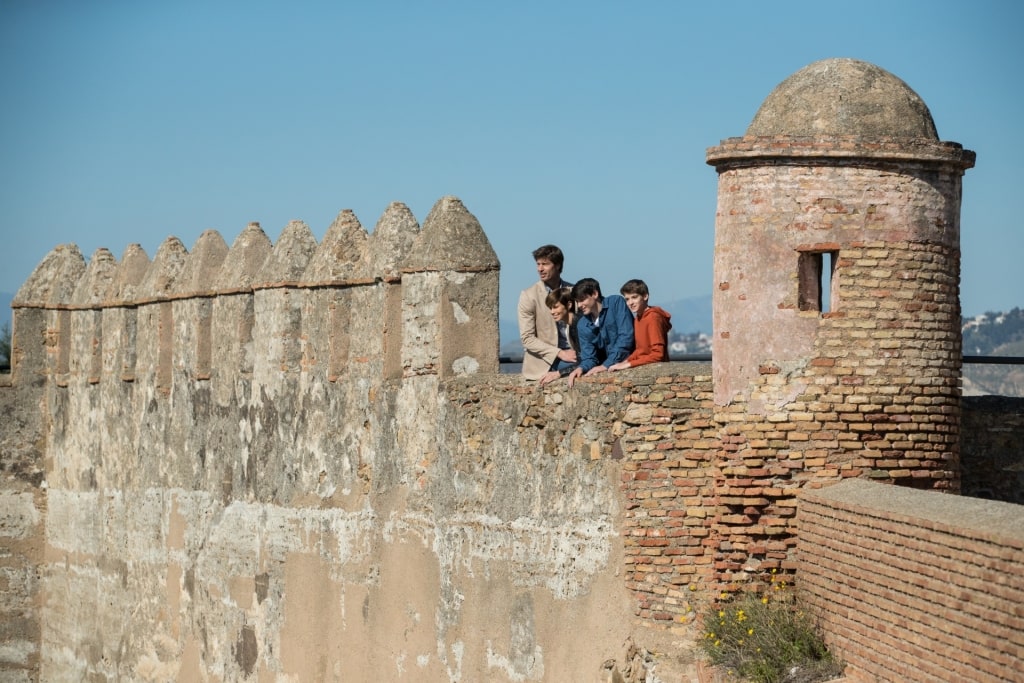
Malaga
Are you tempted to go castle hopping in Europe? Explore Celebrity’s cruises to Spain and live out all of your fairytale fantasies on your next vacation.
